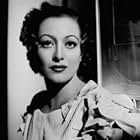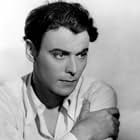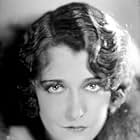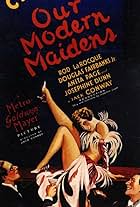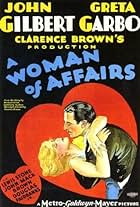IMDb RATING
6.7/10
2.1K
YOUR RATING
A flapper who's secretly a good girl and a gold digging floozy masquerading as an ingénue both vie for the hand of a millionaire.A flapper who's secretly a good girl and a gold digging floozy masquerading as an ingénue both vie for the hand of a millionaire.A flapper who's secretly a good girl and a gold digging floozy masquerading as an ingénue both vie for the hand of a millionaire.
- Nominated for 2 Oscars
- 2 wins & 2 nominations total
Johnny Mack Brown
- Ben Blaine
- (as John Mack Brown)
Edward J. Nugent
- Freddie
- (as Edward Nugent)
Huntley Gordon
- Diana's Father
- (as Huntly Gordon)
Sam De Grasse
- Freddie's Father
- (as Sam de Grasse)
Helen Brent
- Party Guest
- (uncredited)
Geraldine Dvorak
- Party Guest
- (uncredited)
Mary Gordon
- Scrubwoman
- (uncredited)
Lydia Knott
- Scrubwoman
- (uncredited)
Robert Livingston
- Party Boy
- (uncredited)
Fred MacKaye
- One of Diana's Admirers
- (uncredited)
Alona Marlowe
- Party Girl
- (uncredited)
- Director
- Writers
- All cast & crew
- Production, box office & more at IMDbPro
Storyline
Did you know
- TriviaThe film that made Joan Crawford a star.
- GoofsWhen Ann is at the top of the stairs watching the women scrub the floor at the bottom, her hair changes drastically between the medium shot of her and the following close-up.
- Quotes
Ben Blaine: I was just thinking - a man has to be sure of the girl he marries...
Ann: I know how you must feel, Ben - about girls who are daring - and free with their - love - I know I seem stupid - I can't be daring - and free with men - I'm not a 'modern'...
- ConnectionsEdited into Hollywood: The Dream Factory (1972)
- SoundtracksI Loved You Then (As I Love You Now)
(1927) (uncredited)
Music by William Axt and David Mendoza
Lyrics by Ballard MacDonald
Played during the opening credits and as background music often
Sung by an offscreen chorus at the party and danced to by the guests
Sung offscreen often by both a male solist and a female solist and as a duet
Featured review
It sounds absurd, but I would suggest that Harry Beaumont's 1928 silent film Our Dancing Daughters would make an amusing double bill with Whit Stillman's 1990 film Metropolitan. Both films are rather sophisticated critiques of life among society's elite, the gala balls, the flippant attitudes, and crushing realities of romance, treachery and friendship. Written by three women, Our Dancing Daughters is an interesting example of early female empowerment, teaching women that being true to yourself is better than letting others shape you to their ends.
A young Joan Crawford, Anita Page, and Dorothy Sebastian play three wild girls in the early Jazz age who are coming to terms with their place in society and the repercussions of their "flapper" ways. Crawford is "dangerous" Diana, wild, intelligent, and sexual beyond her years. She's unapologetically flirtatious and provocative. Page is Anne, saucy and flirtatious as well. Anne is also poorer than her friends and her mother is counting on her to marry into wealth, urging her to use her virtue as a tool. Sebastian's Beatrice is largely reformed, but she has some kind of past, which bothers her more than it bothers the man who's devoted to her (at first, at least). When Johnny Mack Brown's Ben Blaine (a millionaire and former college football star) enters the picture, he falls for Diana and Anne decides that she will win his heart.
In one of her earliest roles, Crawford is amazing. If you've only seen her later performances (like her Oscar winning Mildred Pierce) or Faye Dunaway's impression of her in Mommie Dearest, it's possible to forget just how beautiful and lively she was. She's a marvelously liberated character, the type woman Hollywood frequently featured in the late silent period before forgetting about them for decades of regressive female characters. She is supported by her parents and feels strength in her independence. When she sees herself falling in love, she seems genuinely surprised and when Anne steps in, she seems genuinely heartbroken.
Our Dancing Daughters (lensed by George Barnes, who later shot several Hitchcock classics like Rebecca) is a rather joyous production when it isn't commenting on society and gender. The film had a jazzy original score written for it and the film comes alive during the several large party/dance scenes. Showing all of the freedom that late-silent films allowed, the camera is mobile and amidst the dancing. The film also features several moments of synchronized sound, mostly involving applause from the crowd.
Our Dancing Daughters is intellectually ahead of its time and it features excellent performances and fine writing. I'm telling you, look at it with Metropolitan. I bet it works well.
I'd give this one a solid and positive 7.5 out of 10.
A young Joan Crawford, Anita Page, and Dorothy Sebastian play three wild girls in the early Jazz age who are coming to terms with their place in society and the repercussions of their "flapper" ways. Crawford is "dangerous" Diana, wild, intelligent, and sexual beyond her years. She's unapologetically flirtatious and provocative. Page is Anne, saucy and flirtatious as well. Anne is also poorer than her friends and her mother is counting on her to marry into wealth, urging her to use her virtue as a tool. Sebastian's Beatrice is largely reformed, but she has some kind of past, which bothers her more than it bothers the man who's devoted to her (at first, at least). When Johnny Mack Brown's Ben Blaine (a millionaire and former college football star) enters the picture, he falls for Diana and Anne decides that she will win his heart.
In one of her earliest roles, Crawford is amazing. If you've only seen her later performances (like her Oscar winning Mildred Pierce) or Faye Dunaway's impression of her in Mommie Dearest, it's possible to forget just how beautiful and lively she was. She's a marvelously liberated character, the type woman Hollywood frequently featured in the late silent period before forgetting about them for decades of regressive female characters. She is supported by her parents and feels strength in her independence. When she sees herself falling in love, she seems genuinely surprised and when Anne steps in, she seems genuinely heartbroken.
Our Dancing Daughters (lensed by George Barnes, who later shot several Hitchcock classics like Rebecca) is a rather joyous production when it isn't commenting on society and gender. The film had a jazzy original score written for it and the film comes alive during the several large party/dance scenes. Showing all of the freedom that late-silent films allowed, the camera is mobile and amidst the dancing. The film also features several moments of synchronized sound, mostly involving applause from the crowd.
Our Dancing Daughters is intellectually ahead of its time and it features excellent performances and fine writing. I'm telling you, look at it with Metropolitan. I bet it works well.
I'd give this one a solid and positive 7.5 out of 10.
- d_fienberg
- Nov 1, 2000
- Permalink
- How long is Our Dancing Daughters?Powered by Alexa
Details
- Release date
- Country of origin
- Language
- Also known as
- Prodate kćeri
- Filming locations
- Pebble Beach, California, USA(Historical photographs)
- Production company
- See more company credits at IMDbPro
Box office
- Budget
- $178,000 (estimated)
- Runtime1 hour 25 minutes
- Color
- Sound mix
Contribute to this page
Suggest an edit or add missing content










